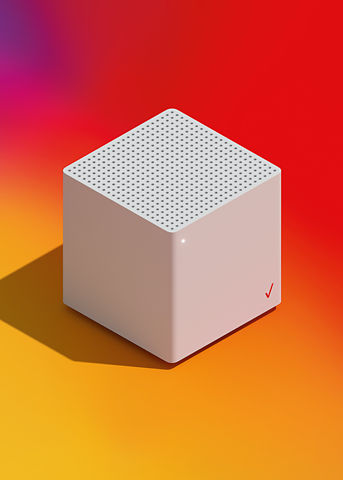In recent years, the rollout of 5G technology has revolutionized the way we use our smartphones. But did you know that 5G has the potential to replace your entire home internet connection? In this comprehensive article, we’ll dive deep into the world of 5G home internet, exploring its advantages, challenges, and whether it’s a viable alternative to traditional wired connections.
The Promise of 5G Home Internet
5G home internet aims to offer several advantages over previous technologies, including satellite internet and Wireless Internet Service Providers (WISPs). While each option has its strengths and weaknesses, 5G seeks to strike a balance that could make it a compelling choice for many households.
Table: A Comparison of Internet Connectivity Options
| Connectivity Option | Advantages | Challenges |
|---|---|---|
| Satellite Internet | – Wide coverage for rural areas. | – Limited speeds. – High latency, unsuitable for real-time applications. – Variability in service quality. |
| WISPs | – Low latency. – Suitable for many rural areas. | – Requires a clear line of sight between access point and home antenna. – Limited coverage. |
| 5G Home Internet | – Higher speeds. – Acceptable latency. – No need for a clear line of sight. – Convenience. | – Speed and latency variations due to wireless nature. – Quality depends on signal strength. – Potential for network congestion. |
As we can see, 5G home internet offers a unique combination of benefits, such as higher speeds, acceptable latency, and no requirement for a clear line of sight. These advantages make it an appealing choice for consumers looking for reliable, high-speed internet without the hassle of traditional cable or fiber installations.
The Convenience Factor
One of the most significant advantages of 5G home internet is its convenience. Unlike traditional installations that require technicians to visit your home during specific hours, 5G home internet eliminates the need for these appointments. You can simply plug in the 5G receiver anywhere with a power socket.
This convenience extends to modem placement. With traditional setups, you’re tied to the location of the cable or Ethernet jack. However, with 5G, you have the flexibility to place the modem wherever you have a power socket. If the signal isn’t optimal in one location, you can easily move it to another.
Cost Considerations
The cost of 5G home internet can vary significantly depending on your location and the providers available. However, in some cases, it can be more cost-effective than a traditional wired connection, particularly if you bundle it with your mobile phone service from the same provider.
While the cost advantage is appealing, it’s crucial to compare pricing and packages in your area to determine if 5G home internet offers genuine savings. Additionally, consider your specific internet needs, such as download and upload speeds, before making a decision.
Speed and Performance
Before jumping into 5G home internet, it’s essential to assess the speed and performance you can expect. 5G speeds can vary depending on your location and signal strength. While some areas may enjoy blazing-fast speeds, others might experience slower connections.
One way to get an estimate of the performance is to run a speed test on your 5G-enabled smartphone if you already have one. However, keep in mind that the performance of a home internet connection can differ from that of a mobile device.
Latency and Gaming
For gamers and those using latency-sensitive applications like video conferencing, understanding the potential for latency on a 5G home internet connection is crucial. While some users report smooth gaming experiences, others have encountered latency swings that affect gameplay negatively.
The wireless nature of 5G can lead to variable loads on the network, resulting in fluctuations in speed and latency. While these issues can occur with wired connections as well, 5G home internet may be more susceptible to them.

List: Considerations for Gamers and Latency-Sensitive Users
- Assess the impact of latency on your gaming experience.
- Consider whether your specific gaming needs align with the performance of 5G home internet.
Types of 5G and Signal Strength
Not all 5G is created equal. There are different flavors of 5G, ranging from ultra-fast but short-range millimeter wave to low band 5G that’s similar to 4G LTE in terms of performance. The type of 5G available in your area can significantly affect your signal strength and coverage.
While millimeter wave 5G offers incredible speeds, it struggles to penetrate walls. In contrast, low band 5G offers better signal strength and reliability, making it suitable for rural areas. However, some providers may fall back to 4G LTE if the 5G signal quality is poor.
Table: Types of 5G and Their Characteristics
| Type of 5G | Advantages | Challenges |
|---|---|---|
| Millimeter Wave 5G | – Ultra-fast speeds. | – Limited range. – Struggles to penetrate walls. |
| Low Band 5G | – Better signal strength and reliability. | – Slower speeds compared to millimeter wave. |
| Mid Band 5G | – A balance between speed and coverage. | – May have some coverage limitations in rural areas. |
Understanding the type of 5G available in your area and the specific offerings of your chosen ISP is essential to manage your expectations regarding speed and signal strength.
Upload Speeds
While download speeds are a crucial consideration, don’t forget about upload speeds. Many ISPs, especially those offering fiber, provide symmetric speeds, meaning your upload speed matches your download speed. However, 5G home internet may not always offer similarly high upload speeds.
Before making the switch, consider your upload needs, such as video conferencing, online gaming, or content creation. If high upload speeds are essential for your online activities, check whether your chosen 5G plan meets those requirements.
Network Backbone and Fallback
It’s essential to understand the network backbone of your chosen 5G home internet provider. Some operators that advertise 5G may still rely on a 4G LTE backbone after the signal reaches the tower. This could impact both speed and latency, so be sure to inquire about the specifics of your chosen plan.
Conclusion: Is 5G Home Internet Right for You?
In conclusion, 5G home internet offers an enticing alternative to traditional wired connections, especially for those seeking convenience and potential cost savings. However, its suitability depends on various factors, including signal strength, speed requirements, and latency sensitivity.
Before making the switch, conduct thorough research, compare plans and providers in your area, and consider your specific internet needs. While 5G home internet has its advantages, it’s essential to manage your expectations and ensure it aligns with your connectivity requirements.
Remember that the 5G landscape is continually evolving, and improvements in coverage, speed, and reliability are expected over time. As technology advances, 5G home internet may become an even more compelling choice for consumers seeking high-speed, wireless connectivity without the limitations of traditional wired installations.













